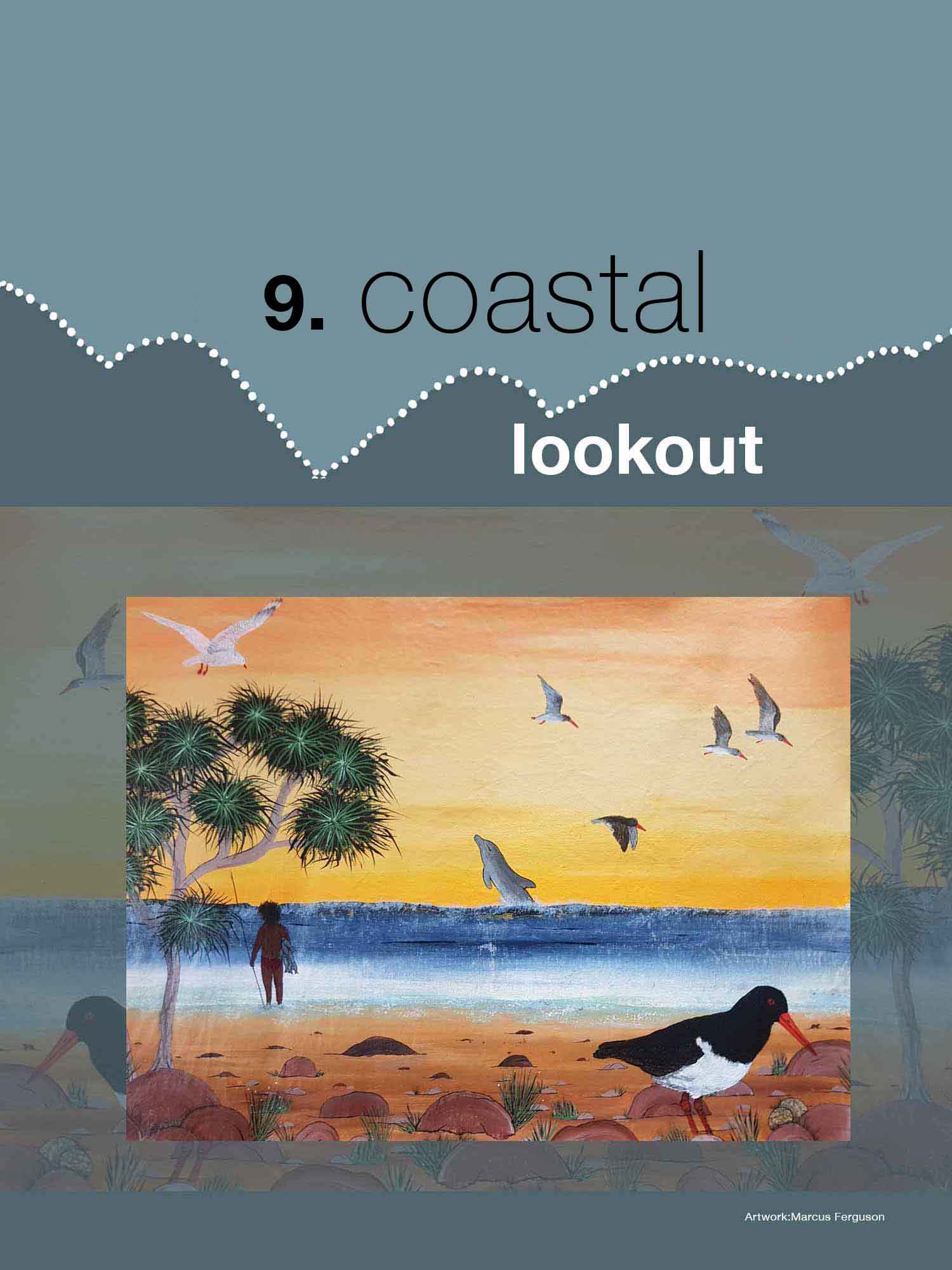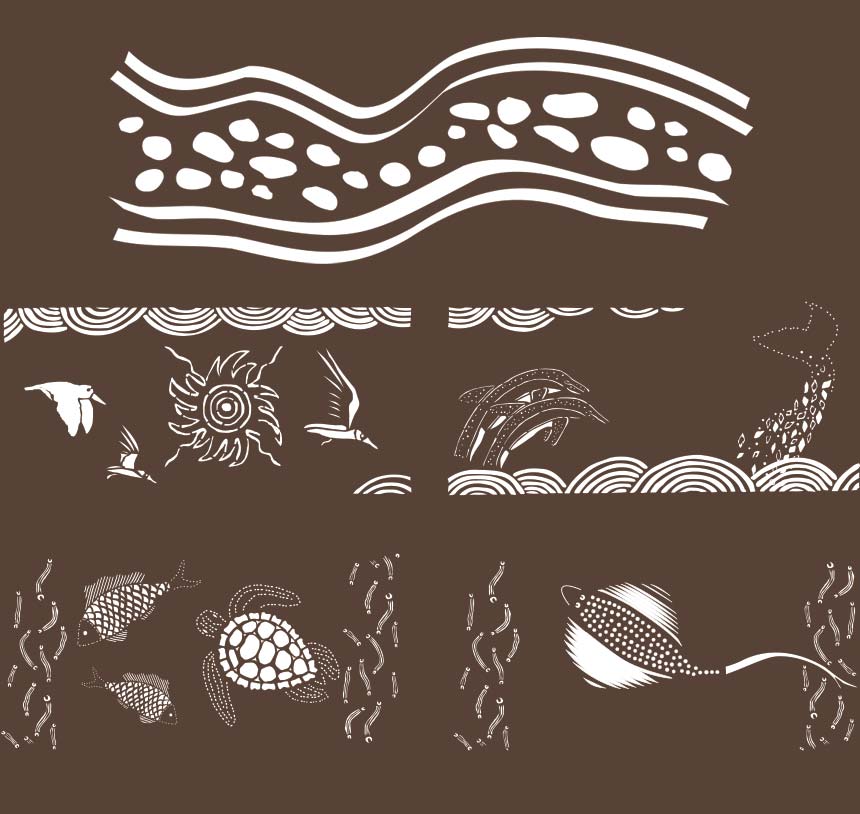The title of this artwork is "guuriiaabuu - way back in the old days". The artist Marcus Ferguson describes it as representing life along the coast in the old days - guurriabuu.
Along the Coastal Walk ...

The stories shared along the Cultural Ways remind us of the importance of whales and dolphins to Aboriginal people. Just as the last migrating whales head south for their summer feeding in the Antarctic, northern migratory birds start to arrive in numbers along our coastline.
This in turn coincides with schools of fish such as salmon and mullet moving in close to the coast and estuaries, where they can be successfully hunted by dolphins and both local and migratory waterbirds.
Whales and dolphins were important to coastal Aboriginal people both as a resource, and as helpers in gathering resources especially in using dolphins to herd fish.
Community members have described the way that dolphins could assist people getting fish when they would go to the beach hit the water and the dolphins would round up the fish and herd them into the nets.
The dolphins would then be rewarded with some fish from the haul.
Recordings of community members talking about how helpful dolphins were in catching mullet are included in signage node 5. Guided by the Seasons.
Aboriginal community members believe that their people could talk to whales and dolphins.
The cultural story How Dolphins Came About provided at signage node 6. Cultural Gathering Place is an explanation of the close cultural association and relationship Aboriginal people had (and continue to have) with dolphins.
A porpoise is the preferred name used by the old people, however, they are also more commonly known as dolphins today.
A story featuring porpoises is included at signage node 8. Sharpes Beach Lookout and teaches about sustaining food resources, respecting traditions, to working together with the land and sea.
Powered by the East Australian Current

There's a watery highway called the East Australian Current that runs down the Queensland coast and sweeps across the north coast marine environments.
This current carries with it many forms of life including turtles that love to hitch a ride on the strong southern super highway. It also includes the larvae of many tropical marine creatures while helping to keep local water temperatures above 17˚C.
This helps support an enormous diversity of fish and invertebrate species in Ballina's offshore waters. These in turn provide a rich year round foraging ground for bird species feeding from the marine delicatessen.
Whale watching
Across the late autumn and early winter pregnant humpback whales travel northwards past here on the way to their birthing grounds in the warm waters of southern Queensland.
There in this maritime humidicrib the baby whales have a chance to begin to develop the thick layer of blubber they'll need for their survival. Surrounded by the warmer waters of the East Australian Current, the humpbacks then travel back southwards past here from mid – late spring en route to their summer feeding grounds around Antarctica.
In contrast to this destination-focussed humpback migration pattern, right whales are happy to settle for giving birth in sheltered coastal bays along the southern Australian coast. This means they can often be seen lingering around in a manner unlike the purposeful march past of the humpbacks.



